Lingchi. It’s a form of execution where a knife methodically removes portions of the body over time, usually leading to death.
Why have I been looking up its definition?
Australian travel writer Ben Groundwater last week tweeted a screenshot of an email from a reader. It read:
“Thanks dickhead… [you get] paid to let thousands of people know about special places that have remained secret to a few until exposed by you. Good one. Anything for the dollar and recognition.”
At first I laughed—travel writing does pay about a dollar. But it got me thinking about so called “secret places” and my role, as a travel writer, in writing about them.
What is travel writing?
I settled on a broad interpretation. The medium is irrelevant—it is the message that matters. Guidebook, travel blog, narrative, film, Instagram post or Youtube video—all can encourage travel. Since I watched A Thin Red Line all I can think about is going to the Solomon Islands. Few would describe the film as a travel movie. What about Eat Pray Love, or The Beach?
What preceded even all these? The snail mail version of Instagram: Postcards.
A brief history of ruining destinations
The earliest known picture postcard was mailed on July 14, 1840, from Fulham to London. Through the 20th century, postcards were part and parcel of the travel experience: a means to stay in touch, to introduce the destination to people back home, to humble brag.
The earliest known picture postcard. Photo: Wikipedia.
On glowing about a destination, Alfred Russel Wallace writes in The Malay Archipelago, about Bali in the mid 19th century:
“During the two days that we remained here, I walked out into the surrounding country to catch insects, shoot birds, and spy out the nakedness or fertility of the land. I was both astonished and delighted; for as my visit to Java was some years later, I have never beheld so beautiful and well–cultivated a district out of Europe.”
So before you aim any outrage at influencers “spoiling Bali”, remember they’re just the latest take on an age-old practice.
The author of Lonely Planet’s first dedicated guide to Thailand (and many others), Joe Cummings was on the ground as the late 20th-century tourist wave crested in the region. Back in pre–internet days, travellers tended to either use Rough Guides or Lonely Planet. I’ve always thought these publishers had something of a gatekeeper role, the power to make or break a destination, but Joe tells me he disagrees.
“I think the assumed power of LP guides, and by extension their authors, was greatly exaggerated back in the day,” he says. “People fallaciously made the assumption that if a lot of travellers were congregated at a destination or eatery or whatever, and they were all carrying LP guides in their hands, that that meant LP brought them to the spot.”
After almost coming to believe this himself, Joe looked at his work, and compared it with what was popular. He saw little correlation.
“The most popular eateries tended to be those closest to accommodations. Those with English-language menus, for example. While all the while I was talking up places with Thai-only menus—a point of pride (or perhaps arrogance) with me. Almost no one was going to those places.”
But it wasn’t only food and accommodation—entire regions were ignored.
“Likewise I touted Isan [the northeast region of Thailand] like crazy especially in the early days. Yet even in the peak tourism era, from 2000 onwards, only around 2% of international visitors bothered with Isan.”
Write it and they will come
Write it and they will come—is often not the case. Not everyone has a spare three days to get to a place or two weeks to dedicate to Isan. Others, itineraries taken up to keep up with the Joneses back home, find little time to search for new spots. Even pre-Covid19, travel was changing. Gap year travellers had dried up and low-cost carriers drove shorter trips. If a gap traveller with time up their sleeve didn’t have time for Isan, what chance did a couple from Beijing on a four-day break?
Pattaya Beach, Ko Lipe in the early 1990s. Photo: Stuart McDonald.
Perhaps giving away secrets in a region few will visit anyway isn’t much of a concern. But what about places more on the beaten track, such as a Thai island badly battered by the tourism stick, Ko Lipe, in the far southwest.
I first went there in 1993 or 1994 and loved it. Over the years, I repeated my thoughts in a guidebook and magazine articles, along with plenty of other travel writers. Over the decades, the island transformed, from four sets of basic huts when I visited initially to now well over 100 hotels.
A numbers game
In Lonely Planet’s 1997 coverage of the island, Ko Lipe received about half a column of print. In the 2003 edition, it warranted one and a half columns, but by the 2018 edition this stretched to four pages. Over the same period, Thailand’s international tourism inbounds rose from 7 to 38 million. The number of islands in the country didn’t change.
Pattaya Beach, Ko Lipe in 2017. Photo: David Luekens.
Is this a guidebook giving away a “secret” spot and then building on its coverage? Or is it an inevitable result of skyrocketing tourism?
David Luekens, a former Travelfish writer and author of the Thai Island Times newsletter, agrees Ko Lipe’s development has been problematic. But, he notes, residents have done well. Some run resorts, others leased their land. Some have become wealthy, but not all: Tourism has not been a win-win for everyone.
The road is long and hard
Four years ago, Lonely Planet author Celeste Brash hit the Batanes Islands in the Philippines. Remote and little visited, at least by foreign travellers, I asked whether she had qualms about writing it up.
“No qualms because I definitely wasn't worried about tons of people suddenly going there. Batanes was hard and expensive to get to. The only tourists there were Filipino—who have definitely discovered the area. The flights were only a few times per week and expensive. It took a lot of time just to figure out the logistics. That in itself will protect them.”
This mirrors my own experiences writing about some of Indonesia’s more remote areas. In practice, some may read about a place and dream of going there. Then they find out that getting there means at least two flights, an 8- to 12-hour ferry and then chartering a sampan. I don’t expect hordes to make the effort.
Where does a writer’s loyalties lie?
When writers talk about not writing about somewhere, where do their loyalties lie? To their readers? To their publisher? To the destination? To the locals? To the environment? To themselves?
It is complicated, and a delicate balancing act. It is here that a more experienced writer, familiar with the territory, earns their keep.
Travel writers need to keep their head. Khon Kaen, Isan, Thailand. Photo: Stuart McDonald.
A good writer should be able to balance these competing loyalties. The more familiar they are with the issues at play, the better able they are to make a solid judgement call.
On this, I come back to David, who plans to one day cover every island in Thailand. I asked him whether he had any concerns about doing so.
“I think the important thing is to be honest about places when sharing them, and possibly warning readers not to behave in certain ways,” he says. “I’ve always tried to be clear about what readers should expect. For example Thai-language skills are a must if going to Ko Chik. Ko Si Boya is a Muslim community so people need to be respectful of that. The environment at small national park islands is fragile so don’t visit on a damaging speedboat.
“Being honest and direct while doing a solid job of explaining the place to readers is very important. It's important for publications to have an ongoing narrative of respect for both the environment and communities. This should be woven throughout their content.”
Is it a secret if you don’t know about it?
Sheree is a British travel blogger who wrote about Cambodia’s Koh Rong Samloem for Southeast Asia Backpacker in 2016. The island was new to Sheree—she’d heard about it from other backpackers. She loved it. Many were not happy she was spreading the word. In a follow-up piece on her own site, she writes:
“The article in question was a lovingly written post about the gorgeous Koh Rong Samloem, a relatively undiscovered island just off the Cambodian coast near Sihanoukville. I never once considered that I had done the wrong thing by telling people about this isolated beauty spot, yet as the comments on social media rolled in, it became clear that not everyone agreed with me.”
Sheree writes of the backlash:
“Some commenters labelled me as selfish for seeking to get the article published, claiming that now that I had been able to enjoy the island and its raw perfection, I was seeking to ruin the experience for others.”
You should have been here yesterday. Koh Rong Samloem, Cambodia. Photo: Stuart McDonald.
Both Koh Rong Samloem and neighbouring Koh Rong had been in guidebooks for years. By the time Sheree hit the sand, they’d been developing for a decade. They may have been a secret to some, but they were a secret in plain sight. Sheree tells me:
“I think rather than not writing about hidden beauty spots, it is far better to educate travellers about how to preserve them. With so many bloggers and guidebooks, someone is bound to share the destination, even if you don't!”
Amen.
The response Sheree received ties back to my chat with Joe. He is convinced that many who owned a Lonely Planet were not really reading it.
“I realized, after many years of meeting folks on the road with LP guides, that they weren't reading them with much depth.”
If people were not reading the book, how were they finding out where to go?
“I believed then, and I still do today, that word of mouth is most influential, and the penetration of social media, blogs, and so forth spreads it around much faster and on a larger scale than print media ever could.”
Word of mouth
Back on July 14, 1840, Theodore Hook sent a postcard to himself from Fulham to London. The postcard had an audience of one. Today, through platforms like Instagram, Youtube, Facebook and Twitter, a single post can reach millions.
Pre-Covid19, I did a little travel consulting, helping people plan their trips to the region. The biggest challenge was trying to convince clients to take my advice over that of people they knew. Word of mouth from family and friends trumps all else. With social media, and a more liberal interpretation of “friends”, word of mouth has an energy all of its own.
Mù Cang Chải is pretty enough without photoshopping. Photo: Stuart McDonald.
As with the postcards of old, many want to retrace the steps of their favourite influencers. The desire for this is so strong that on Bali, GetYourGuide offers a tour for Instagrammers.
Visual purveyors of travel information get plenty of flack from the more traditional writing crew. They’re labelled as vacuous, self–centred and destination agnostic. They don’t care where they are, as long as they are in the photo. Fakery, as with Bali’s Gates of Heaven, or Mù Cang Chải, in Vietnam, damage both trust and destinations.
That said, plenty do a great job. Food in particular is well suited to more visual mediums. Take a look at the work of Mark Wiens, Vietnamese God or Aum Trang Ko’e and tell me your stomach isn’t rumbling.
Food for thought
When I travel (or travelled!) I often end up going out to eat with friends who also happen to be street food tour guides. I often ask them to take me where they take their groups, but also to the places they like to eat by themselves. Secrecy surfaces: “Ok, but you can’t write about it!”
No geo-tagging allowed! Photo: Stuart McDonald.
For these friends, their currency is authenticity. Their clients have a perception of authenticity that excludes other foreign faces. The guides find the perfect spots and jealously guard them from other operators. I’ve been told of competing businesses putting friends on tours to steal secrets. Even worse though? A guest’s Instagram posts, or—worst of all—geotagging. “Game over,” says one guide, “The iPhone—I hate it. Just eat man!”
But what about the businesses they eat at? Is there a conversation taking place with them? Should there be?
Jodi Ettenberg, a Canadian food and travel writer, wrote about Mrs Pa, a fruit shake seller in Thailand’s Chiang Mai, years ago. She said she made the best smoothies in Chiang Mai; four years later, Mrs Pa had no complaints when Jodi returned to visit her. Quoting Mrs Pa in a followup piece, Jodi writes:
“I am really happy to be busy. I have been able to put my kids through school because of how busy the stall has been, and I have tried to save what I can to eventually be able to buy a house.”
Others have not fared so well. Down in the Thai capital, there is a Thai Omelette Queen who would dearly love to give her Michelin star back. How much was written and Instagrammed about her place before it slid onto Michelin’s radar?
Selfish secrets
If you thought food was a minefield, try surfing. UK travel writer Tim Hannigan, a native of Cornwall, writes that the difference is particularly pronounced with surfing, “because the difference between three people and 20 people on a peak is enormous in terms of the experience. But definitely selfish, and disregarding local interests.”
I understand why surfers may want to keep a place secret, but is it theirs to keep? Maybe it is time to talk to the locals to find out what they want?
Local wants, needs and desires
Travel writers mine local experts for what is hot and what we can skip. We need to be spending more time asking them what they want.
Writes travel writer Alison Bing:
“I never assume people welcome tourists. In Morocco, I met with village councils to ask—plus what they’d like visitors to see, know and do, convenient times and places to interact, points of contact and expected conduct. Later, I checked in: they were glad of visitors, but also boundaries.”
American travel writer—and ex-LP writer—Ryan Ver Berkmoes has spent years witnessing and writing about changes in Bali.
White Sand Beach in 2011. Photo: Stuart McDonald.
In 2003, the first year he covered Bali, lots of people suggested he visit “Virgin Beach”, “White Beach” and “Pasir Putih”, all names for an isolated beach east of Candi Dasa.
“What a beach! It had sand that by Bali’s dismal sand standards was indeed white. And there was not a person there. It was untrod, entirely unbuilt and deserted. So I write it up and then thought, ‘What happens when hundreds of people a day turn up?’
“On the way out I talked to a group of locals and asked them if they would have a problem if the beach became overrun. ‘No!’ was the universal (and immediate) reply. ‘We can use money for our children, our school, our houses, our food. PLEASE put the beach in your book!’ “
Ryan still wrestled with the question. He had visited Bali a decade earlier and already seen how it had been despoiled, but he followed the wishes of the locals.
“Now you’ll see beach bars, mobs of people, a vast parking lot and throngs of vendors. I’m not fully comfortable by my decision almost 18 years ago, but I’d do it the same way today.”
I know long-stay foreigners in Bali who were livid with Ryan’s decision. But was it theirs to claim as secret? No.
So why is it that Joe saw little to no effect in writing about Thailand’s northeast, while Ryan’s beach transformed?
A guiding hand is needed
If you’ve been writing about Southeast Asia for a while, your list of mangled destinations will be long.
Alex is an Indonesian travel blogger who drives me mad with his beautiful photos. When I asked him about his thoughts of revealing sensitive places, he was unequivocal.
“All we can do is write about the details, the pros and cons, and how we describe them into words, photos, and maybe short videos. Local government has the job to make good or bad policies for sustainable tourism.”
Cambodia’s Sihanoukville may be the poster child for government mismanagement, but there’s no shortage of cautionary tales.
Sihanoukville still has its moments. Photo: Stuart McDonald.
Travel in the region being largely shutdown could be a time for some introspection. Says Alex:
“I think the pandemic is a ‘good time’ to think again about it. It’s like a blessing in disguise for local tourism.”
Destinations could rethink the tourism of tomorrow. Governments could focus more on domestic travellers. They could highlight sustainability and community-based tourism. When travel starts to trickle again, they could look to lure independent budget travellers. Travel writers have an important role to play here.
Lingchi
After receiving the email calling him a dickhead, I had a chat to Ben. He says he once asked the co–founder of Lonely Planet, Tony Wheeler, whether he thought Lonely Planet ruined destinations. Tony replied with a quip along the lines of: “I’ve been trying to ruin Madagascar for years!”
I asked Ben the same question.
“I don’t think I have the power to ‘ruin’ a destination. In some ways it takes far more than a single travel story to build the critical mass to ruin somewhere; in other ways it now takes far less. A single, brilliant Instagram shot can do it.
“But mostly I think the desire to ‘save’ a place is a selfish one, unless there is some critical environmental danger to take into account. There’s a greater good in shifting some of the travel crowd away from the perceived hotspots. Spread their impact around while also spreading their dollars. For every place we decide to keep secret there are probably plenty of locals who would welcome the influx of business.”
It is undeniable that travel writing can damage destinations. I can’t think of a single place though where it was a single piece that made the place blow up.
Instead, it is the death of a thousand cuts. A paragraph in a guidebook. Word of mouth. Blog posts. Instagram photos, Youtube videos. One or two get traction, numbers snowball.
Ko Bulon Lae, not far from Ko Lipe, but by comparison, has barely changed. Photo: Stuart McDonald.
Thatch huts become guesthouses, fans switch to air–con. Hotels morph into resorts. A wider variety of people demand a wider variety of services. An airport arrives. At the same time, locals have their land stolen, crime increases, drugs arrive. Tourism is never a win-win.
It’s like slow–moving gangrene, so a band aid won’t fix it. A complete reappraisal of how travel works is needed.
Writing needs to change
Not writing about secret places isn’t the answer. We need better, more educated writing and communication. A more responsible approach to readers, to the destinations and to the local people.
Before asking locals where the best sunset beers are, we could ask them: “Do you even want tourists? How, why, for how long…”
Start there.

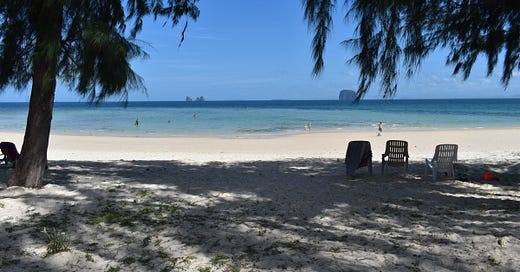


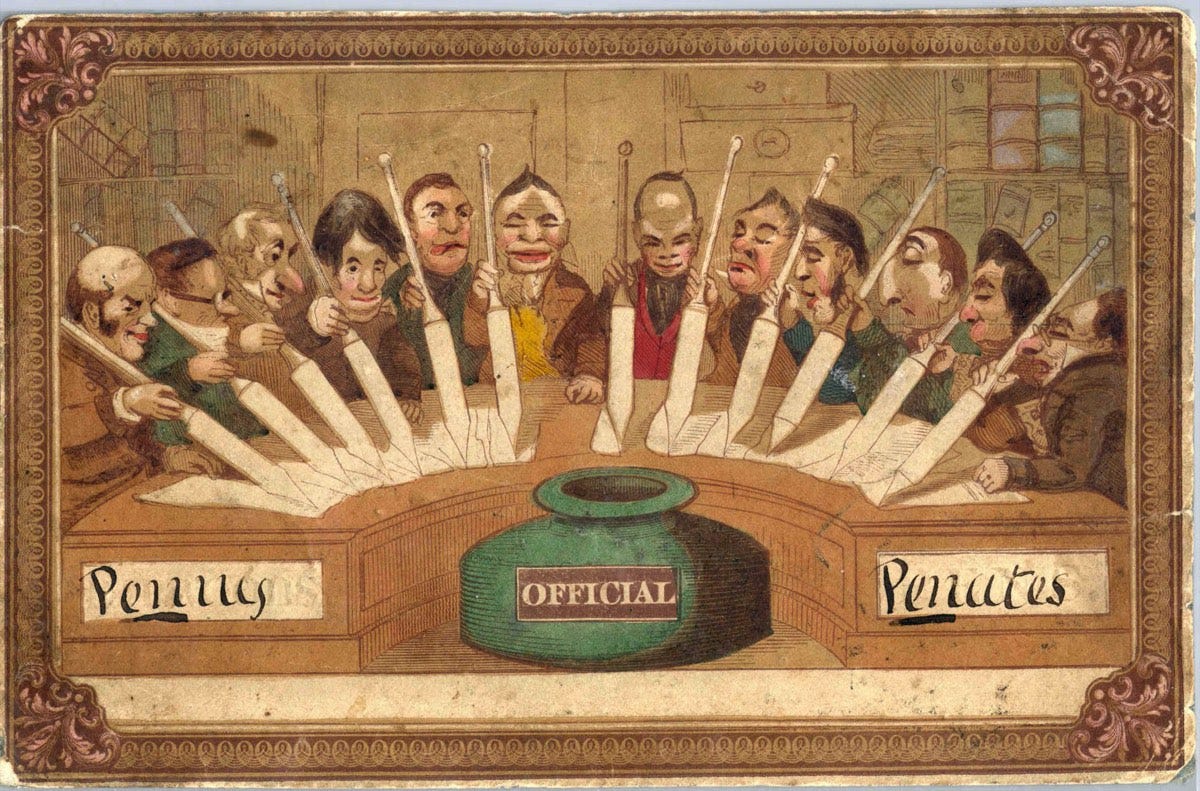
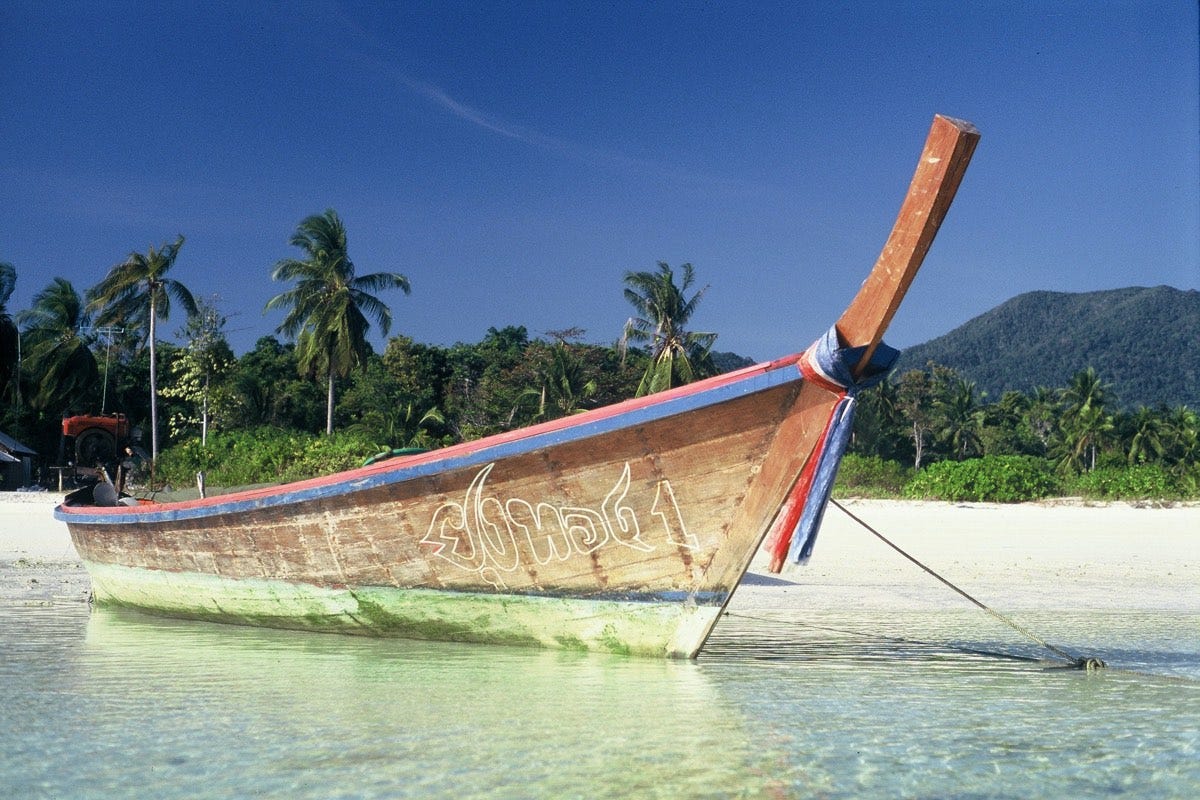
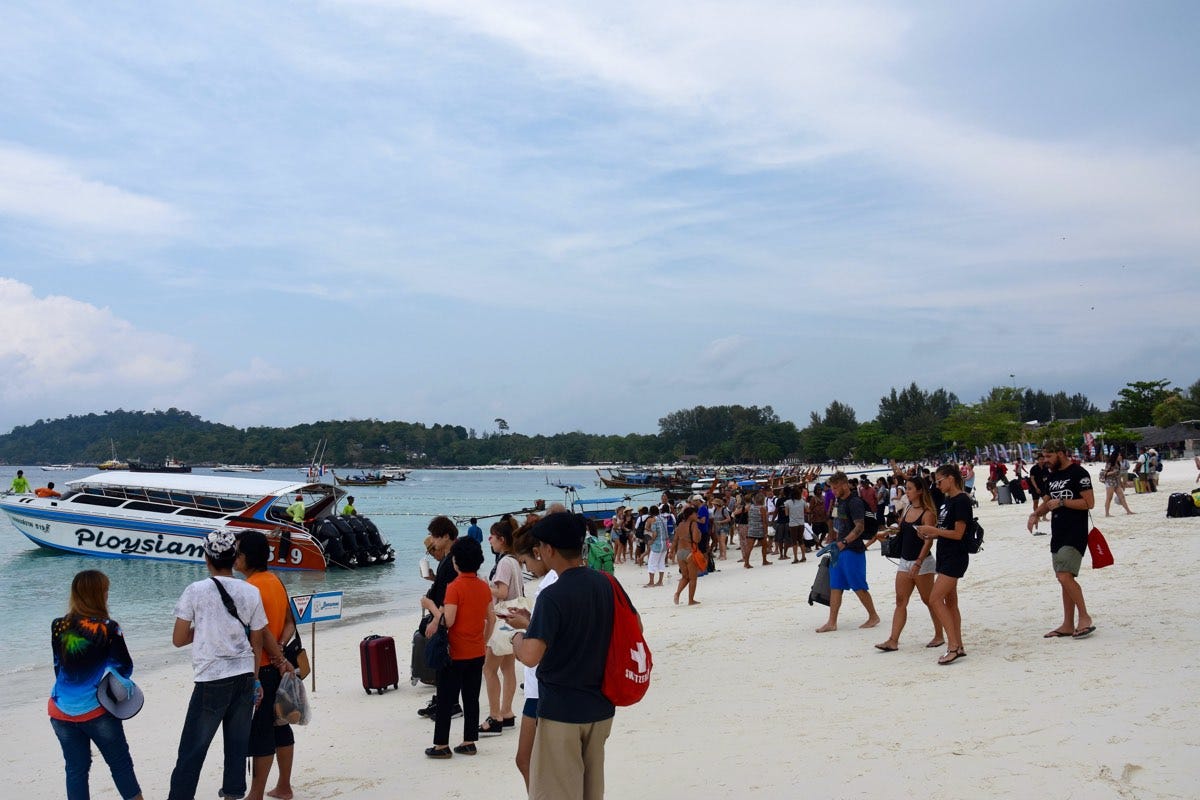

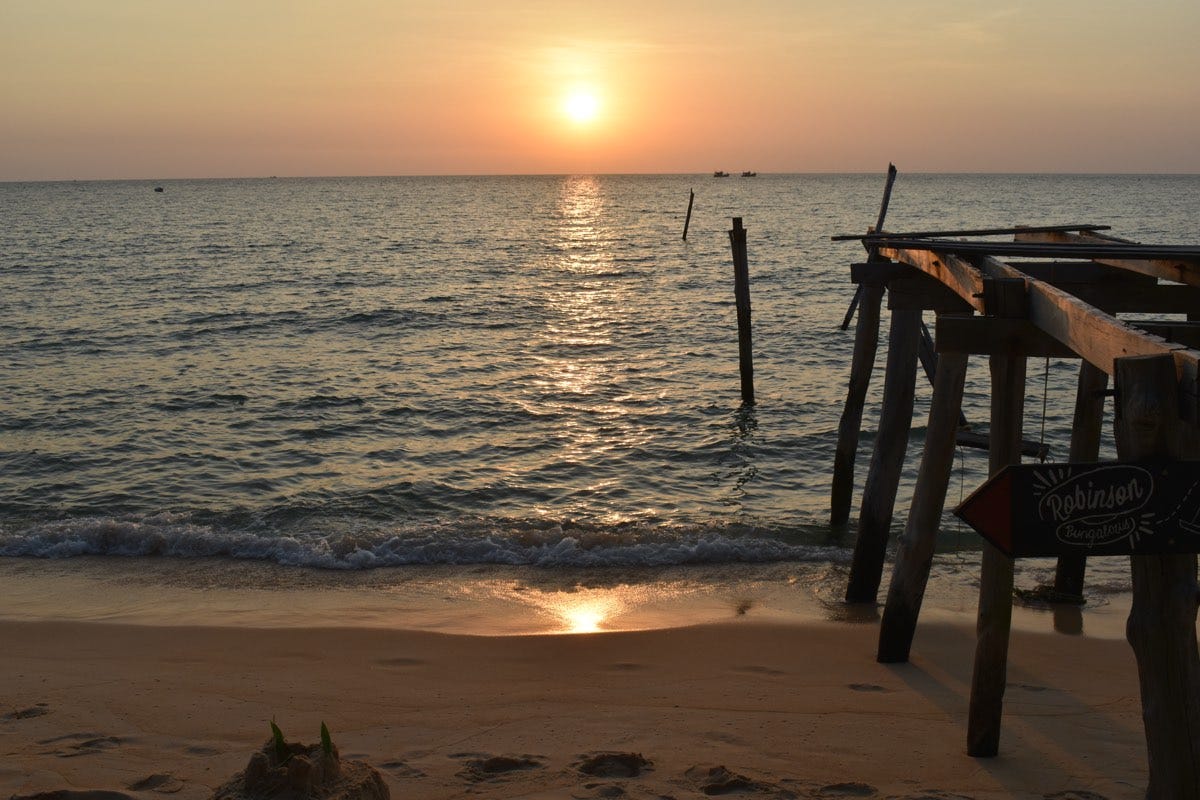
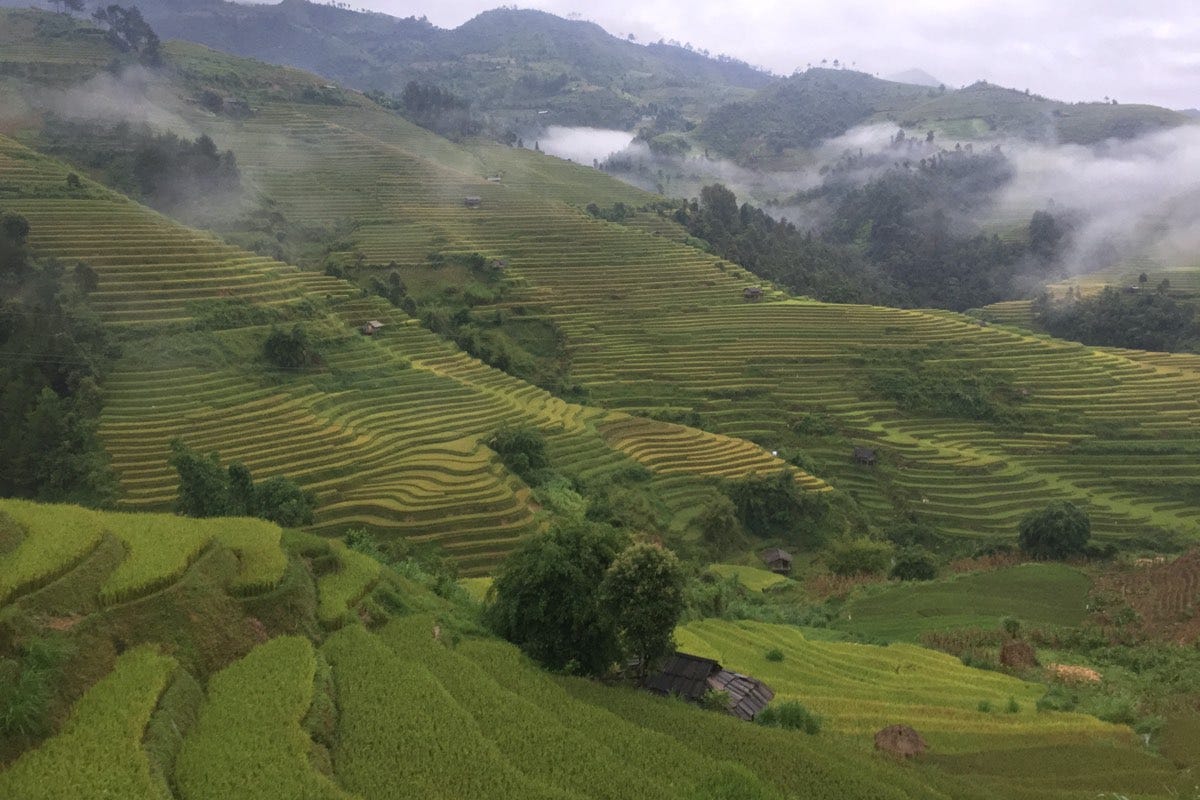
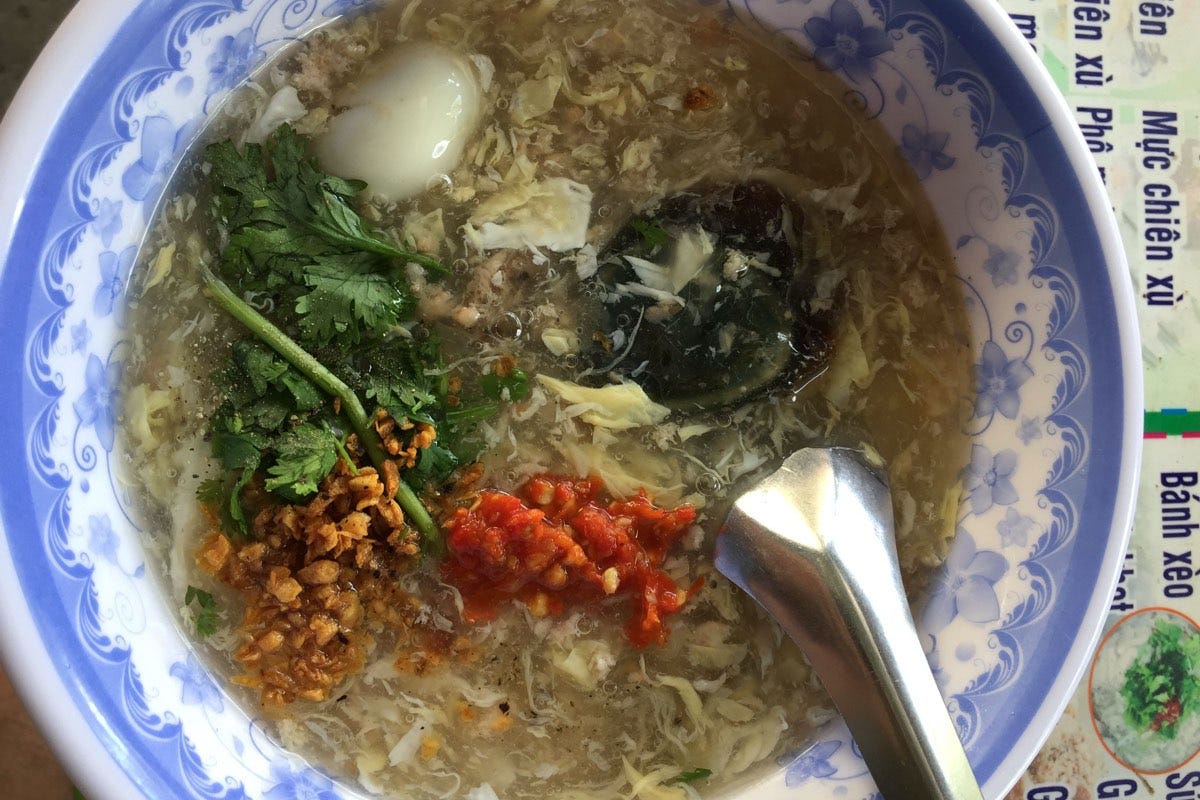
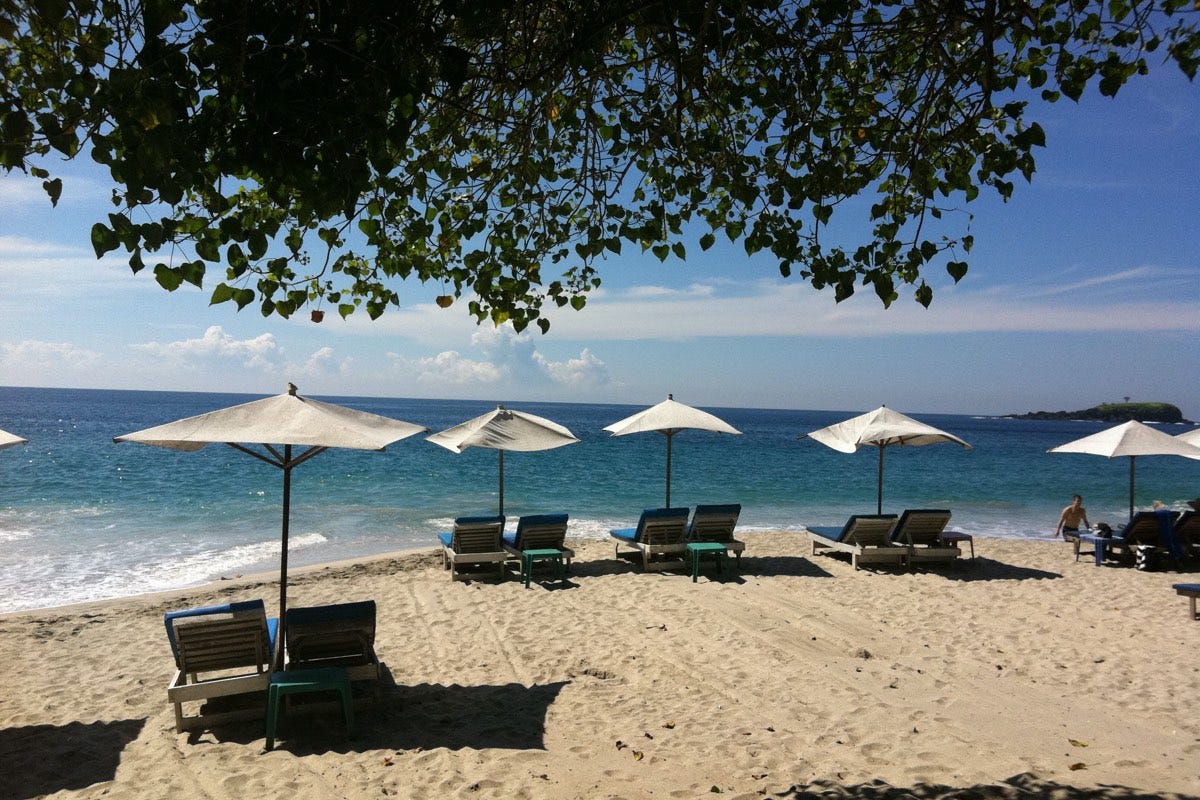





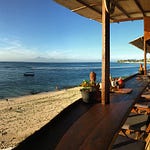




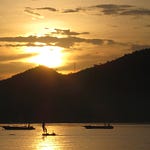
Share this post